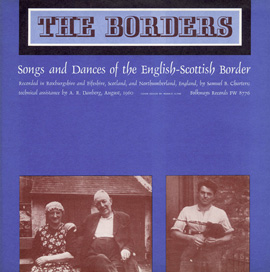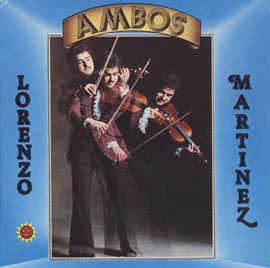Summary
This exciting lesson explores the rich sounds of Western Samoa. Students will recreate the beautiful sounds of singable melodies with uncomplicated rhythm. The students will sing, dance, and drum in the traditional community style of Western Samoa.
Suggested Grade Levels: 3-5
Country: Western Samoa
Region: South Pacific Islands
Culture Group: Samoan
Genre: Dance and community singing
Instruments: Voice, body percussion, slit drums, xylophones, mats and bamboo or bottles
Language: Samoan
Co-Curricular Areas: Social Studies and Geography
National Standards: 1, 2, 5, 6, 9
Prerequisites: The students need to be able to keep a steady beat
Objectives:
- The students will listen to the drumming selections (National Standard #6)
- The students will be able to identify two drum sounds of Samoa, the lali, the medium slit drum, and the pate, the small drum. (National Standard #6)
- The students will be able to play basic slit drum rhythm patterns (National Standard #6)
- The students will be able to identify and sing a melodic phrase from the song, “Ia lava lava.” (National Standard #1, #5)
- The students will be able to play an accompaniment to “Ia lava lava” on the xylophone. (National Standard #2, #5)
- The students will compare the songs and instrumentation of Western Samoa with songs and instrumentation that they hear at home (National Standard #9)
Material:
Smithsonian Folkways listening excerpts from:
- “Pu” (Samoa) performed by Malufinao Falemai from Music from Western Samoa: from Conch Shell to Disco (FW04270_101)
- “Lali” (Samoa) performed by two members of Methodist Church from Music from Western Samoa: From Conch Shell to Disco (FW04270_102)
- “Pate” (Samoa) performed by Reverend Tufi Fa’apusa, Congregational Christian Church of Samoa from Music from Western Samoa: From Conch Shell to Disco (FWO4270_102)
- “Laulau Siva” (Samoa) performed by the matai of Solosolo. A song of praise, from Music from Western Samoa: From Conch Shell to Disco (FW04270_5)
- “Ia lava lava” (Samoa) performed by singers and dancers from the villages of Lufilufi, Falefa, Faleapuna and Saluafata, from Music from Western Samoa: From Conch Shell to Disco (FW04270_13)
- “Lau Lupe” (Samoa) performed by youth group from Saleufi, Apia, from Music from Western Samoa: From Conch Shell to Disco (FW04270_14)
- Slit drums, or reed mats with bottles or bamboo inside.
- Bass xylophone, alto xylophone, soprano xylophone.
- CD player, space for the children to sit, sing, and dance.
- A strong singing voice.
- Map of Samoa: Go to internet and find a map of Western and American Samoa.
- Floor space for dancing, singing and playing.
- Pictures follow:



Lesson Segments:
- What do you hear? (National Standards #2, #6)
- Can you sing? Can you clap? Can you play? (National Standards #2, #6, #9)
- Let’s play ‘Follow the Leader’ (National Standards #1, #2, #5)
- Got Ukes? (National Standards #1, #2, #5, #9)
1. What do you hear?

“Pu”
from Music from Western Samoa: from Conch Shell to Disco (1982) | FW04270
“Lali”
“Pate”
“Laulau siva”
“Ia lavalava”
“Lau lupe”
- Play “Pu”. Ask the students to identify what kind of instrument they hear. (A conch shell) Ask what country the students would hear it in. (Philippines, Pacific Islands, Samoa, Fiji,) Find the country of Western Samoa on a map. (Use internet search engine to find a map of Samoa.) Ask what other natural resources do you think the people of Samoa use to make instruments? (Coconut shells, palm leaves, other ocean shells, tree logs, and bamboo.)
- Play recordings of “Lali” and “Pate”. “Ask, ‘What type of instruments do you hear?’” (A drum made from a hollowed out log, a slit drum.) Listen to the sounds of “Lali” and “Pate” again, clap along. “Ask, ‘What is the difference in the two sounds?’” (Pate is high and bright and Lali is lower and played by two people.) Have the children make a high sounding clap with their two hands straight together and clap, then have the children make a lower, louder sound by cupping their hands and clapping their hands together in the shape of an X.
- Listen to the beginning of “Laulau Siva”. Can you follow the two different types of clapping with the leader, the “Fuatimi”? As you listen a little more of “Laulau Siva,” ask what type of a song do you hear? (A call and response)
Assessment:
Students should demonstrate their understanding verbally, and in the rhythmic performance of the two claps.
2. Can you sing? Can you clap? Can you play?
- Listen “Ia Lavalava”. “Ask,’Can you hear the sounds of the “Pate” or the “Lali?” What other sounds do you hear?”’ (Singing: melody and harmony, shouts)
- Listen again, and hum with the singers. “Ask, ‘How is this accompaniment different than what the children hear at home?”’ (There isn’t any melodic instruments accompanying the singers)
- Listen again, and sing softly using the syllable “la” with the singers. “Ask, ‘As you sing this song, can you make your two different claps along with the singers?”’
- Listen again, and while singing softly and clapping along with the singers, choose two children to play slit drums (or other drums) along with the class, one low pitched and strong, the other one high pitched and weak.
Extension (Optional):
An alternative activity, is to bring a reed mat, called a fala in Samoa, roll it up and then using two sticks have the children practice playing it as the “Pate” with the song “Ia lavalava”. Add another reed mat, but put either a stick of bamboo inside, or a round bottle to make a louder sound of the “Lali” slit drum.
Assessment:
Students will demonstrate understanding through discussion, and by performing the two different hand claps, and by playing the instruments.
3. Let’s play ‘Follow the Leader’s
- Ask, ‘Can you make the music your own? Have the children listen again to “Ia lavalava” while humming the melody and tapping softly the strong and weak beats. Have the children go to the Bass, Alto and Soprano Xylophones. Starting with the bass part, add Alto and then the Soprano parts in slow and steady performance. When the accompaniment is learned, invite the children to sing using the syllable “la” along with the melody.
- Add the slit drums, the “Lali” (the louder, strong sound) on beat 1, and the “Pate”(the higher, weak sound) on beat 3.
- Choose a group leader, in Samoa the leader is called the fuatimi. The fuatimi stands in the middle of the singers. The singers sit close around in a semi-circle, and then the instruments are placed on the outside of the semi-circle. The fuatimi determines the steady tempo, and leads the instruments and singers. The fuatimi can also indicate when the singers clap their hands for additional percussion. The fuatimi can also dance gently to the music, in the Samoan form of a “taupou” dancer. See the liner notes.

Assessment:
Students are evaluated for their competence playing of the instruments, singing, and clapping.
Extension: Got Ukes?
- Listen to the recording, “Lau lupe”. Ask, ‘What do you hear?’ (Slit drums, shouting, singing, clapping, and a stringed instrument; a guitar) and, ‘Is there something new in this recording that distinguishes it from earlier recordings?” (The introduction of a guitar is heard.)
- A beginning Ukelele class would be able to add the chords of C and G to the song “Ia Lavalava” .
- “Ia lavalava” can be performed with a leader, (a fuatimi) who is surrounded by singers, barred instruments, slit drums and ukuleles.
Assessment:
Students may be assessed for their competence leading and playing of the instruments, singing and clapping.





